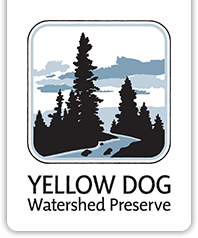
Blog > Water Withdrawal Incident in Big Bay
Water Withdrawal Incident in Big Bay

Big Bay residents contacted the Yellow Dog office on January 19, 2015 during the morning hours for concerns about a withdrawal or possible unregulated discharge into saturated areas adjacent to the Dam Road on the north side of Lake Independence. The residents observed a tanker truck with L & H Industrial insignia with a pump and hose in a ditch. L & H is a global mining parts manufacturing company. Residents took photos, and observed the site where green liquid had been spilled in the ditch and all over the ground. YDWP investigated further.
YDWP and a Big Bay resident contacted the DEQ Assistance Center which was closed for the national holiday, but eventually spoke with Marquette employees who address discharge and withdrawal permitting for the area. The DEQ called the company which contacted the crew and spoke with the supervisor. The DEQ visited the site, and noted that it was a mess.
The DEQ confirms that the tanker was pumping water out of the saturated area, which is legal if it is under 100,000 gal/day averaged over a 30 day period, and it was. The water was used to cool off directional drill bits. Also, windshield washer fluid (the green liquid) was used to keep the pump from icing. The state asked the company to go back out and clean it up and try not to make such a mess in the future. The withdrawal and related activities were sloppy, and the company needs to be more responsible and properly dispose of large quantities of washer fluid so it is not a hazard in a residential area.
Tankers withdrawing water should also contact landowners ahead of time to at least inform them. Although withdrawals are not regulated under 100,000 gal/day, the landowner has the right to ultimately decide whether they will allow this to occur on their property. A DNR special use permit is needed on state-owned property for a withdrawal – even if it’s not a regulated withdrawal.
YDWP will continue to preserve and protect the watershed in its most natural state, for now, and for the benefit of future generations.

